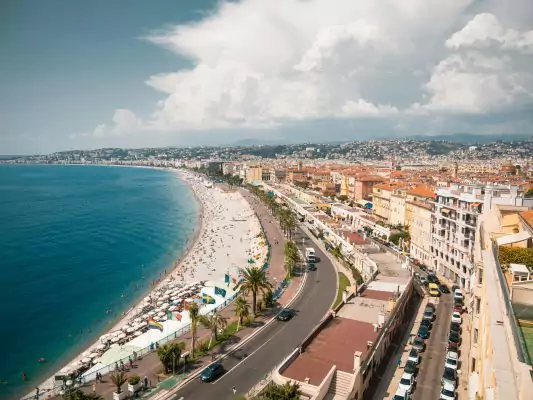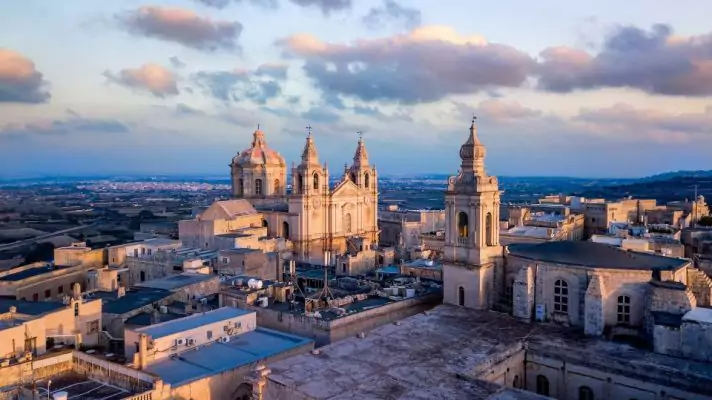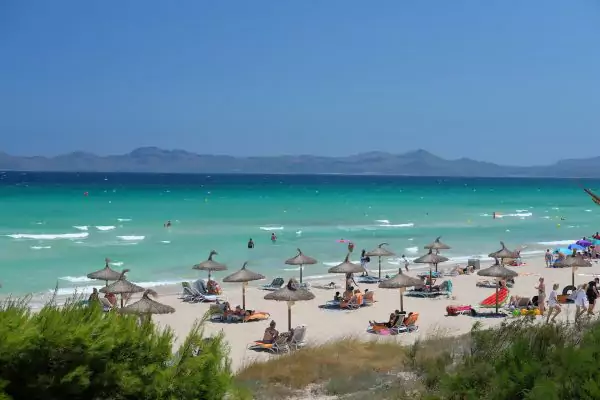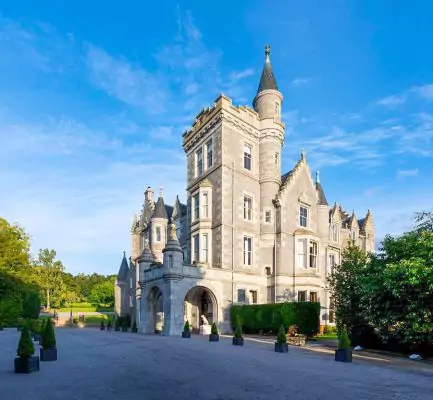Flanders 3-Day Travel Guide – What to see and do in Bruges, Ghent and Antwerp

Have a look at our Flanders 3-day travel guide and discover the best this Belgian region has to offer. The guide includes hotels, restaurants, tips to avoid tourist scams and even a detailed list with everything you must see and do in 3 days in the most beautiful cities in Flanders, such as Bruges, Ghent and Antwerp.
Considered the northern half of Belgium, a nation strongly divided by language, culture and traditions, Flanders is a region that, despite its small size, boasts a pretty interesting range of destinations worth visiting. Plus, distances are rather short, making it easy to craft an itinerary with multiple stops that won’t eat up too much of your vacation time!
Although the enchanting city of Bruges and its picturesque streets and medieval canals stand as the region’s undisputed highlight (as well as one of the most beautiful cities in Europe), make sure not to overlook the other gems scattered across Flanders.
That being said, we invite you to have a look at our Flanders 3-day travel guide and discover the best the region has to offer, including hotels, restaurants, tips to avoid tourist scams and even a detailed list with everything you must see and do in 3 days in the most beautiful cities in Flanders, such as Bruges, Ghent and Antwerp.
Flanders 3-Day Travel Guide – Visiting Bruges, Ghent and Antwerp
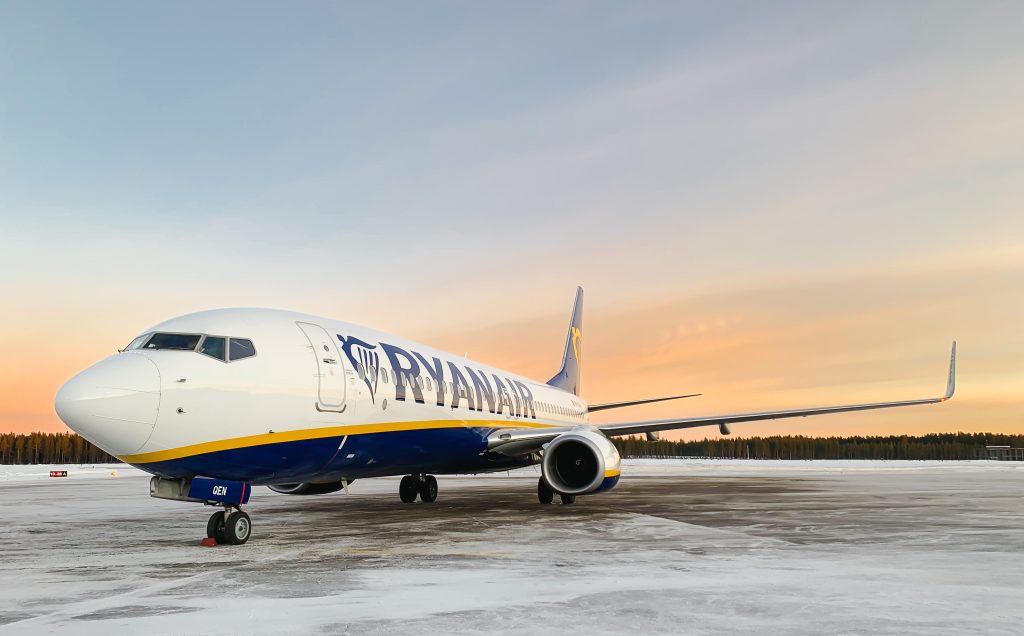
How to get to Flanders – Flights from the UK
Although the region is served by two different airports (Bruges and Antwerp), international connections are scarce, which is why most visitors end up landing at one of Brussels’ air hubs: the Brussels-Zaventem Airport and the Charleroi Airport.
As such, if you’re traveling from the UK, it is possible to fly directly into Brussels-Zaventem from London-Heathrow (British Airways and Brussels Airlines), Birmingham (Brussels Airlines), Edinburgh (Brussels Airlines) and Manchester (Brussels Airlines). As for Charleroi, you can fly there directly from Edinburgh, Manchester, Glasgow and Liverpool, with all connections operated by Ryanair. To find out how to move between these airports and the cities of Bruges and Antwerp, please check out the appropriate section on this guide below.
Alternatively, and considering the region’s central location in the European continent, you may also fly into the likes of Amsterdam, Eindhoven, Lille, Luxembourg, Koln, Dortmund, Dusseldorf or Frankfurt (and even Paris) and then travel overland to Bruges by either train or bus.
Flanders 3-day travel guide – Best time to visit Bruges, Ghent and Antwerp
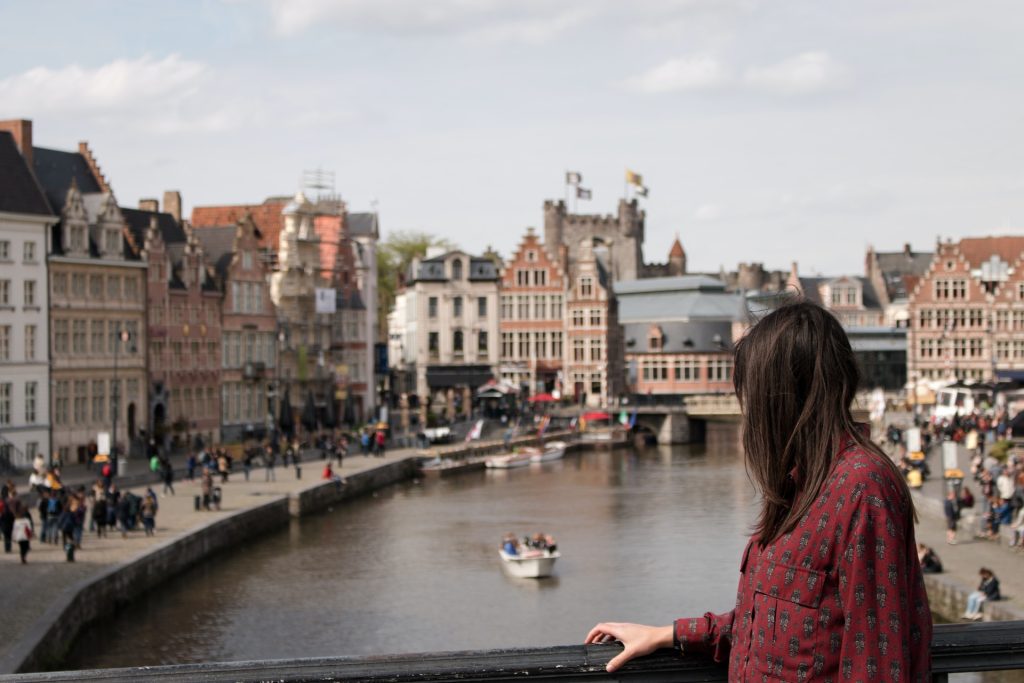
Not a lot of wiggle room to be creative here! Considering the region is located in Europe, Spring, Summer and Fall are definitely the most sought-after months when it comes to booking a trip to Bruges, Ghent or Antwerp, with the period between May and September standing out as the most researched. However, keep in mind accommodation prices will be through the roof during Summer months!
On the other hand, you may choose to visit during shoulder-season, when temperatures tend to be more pleasant, the streets less crowded and the prices smaller. However, and for those strong-willed enough to face the rainy and damp Belgian winter, visiting Flanders in the winter can also feel refreshingly rewarding, as dozens of Christmas markets spring up all around its cities.
Documents needed for your trip to Flanders
Since Belgium is part of the EU, British citizens do not need a visa to visit. You’ll just need your passport, which must have been issued within the last 10 years and remain valid for at least 6 months from the date of your trip.
However, keep in mind that starting in 2024, British passengers will need to apply for ETIAS in order to enter any EU country.
Flanders 3-day travel guide – Withdrawals, banking fees and travel budget

With the Euro (€) as Belgium’s official currency, any withdrawal using a UK bank card might incur in the payment of several different fees. Besides the percentual fee referring to the currency conversion, some UK banks may also charge a flat commission for withdrawals made outside the UK. In some instances, you may well end up paying 5%-6% of your original withdrawal in banking fees.
On the other hand, exchanging money before your trip is not a viable solution either. Besides not being any cheaper, it’s also not safe or wise to carry so much money on you during your trip. As such, we recommend using the services of online banking fintech companies such as Revolut, N26 or Monzo.
Although each have their own limitations and fees, they allow you to withdraw a certain amount in foreign currency without any fees involved. And even after that threshold is reached, costs are much smaller when compared to traditional banks. Sign up for Revolut for free >> to get 3 months of Premium.
Flanders 3-day travel guide – Common scams and frauds in Bruges, Ghent and Antwerp
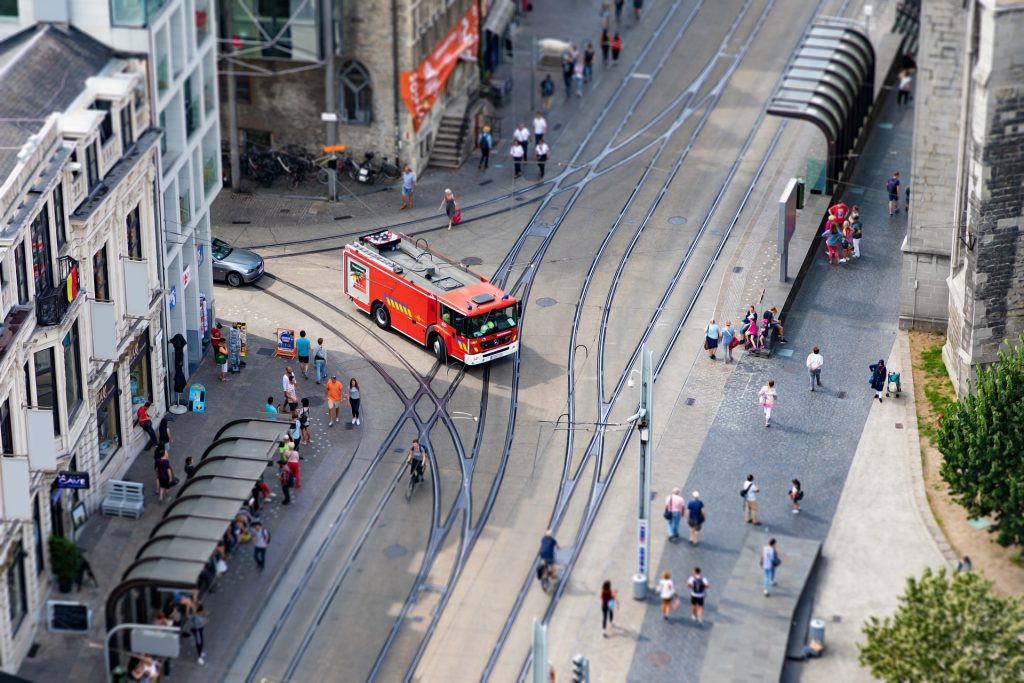
Since we’re talking about the country that hosts the capital of the EU, the whole of Belgium can be considered a pretty safe tourist destination. In the specific case of Flanders, and even when referring to its biggest cities, such as Antwerp, these places are still quite small by European standards, boasting a quaint atmosphere and very low crime rates.
However, and much like you would do in any other big city, using your common-sense is key. That means no taxis whose drivers refuse to start the meter, no accepting help from strangers when you’re using an ATM or trying to buy metro tickets and always keeping an eye out for your stuff when you’re walking through busy areas. To sum up: don’t do anything you wouldn’t feel comfortable doing in any other city!
Unlike regular bags, anti-theft bags are specifically designed to prevent pickpockets and thieves from easily accessing your belongings. PacSafe is one of the leading brands in this category, producing bags that boast lockable zippers, cut-resistant materials and RFID-blocking fabric that helps protect against those trying to steal your credit card information through contactless technology. We currently use the Lunar, Crossbody and Sling models and can personally attest to their high-quality materials – especially the locking zipper technology, which makes it nearly impossible for anyone to open your bag without you noticing.
Where to sleep in Flanders – Hotels and Accommodation in Bruges, Ghent and Antwerp
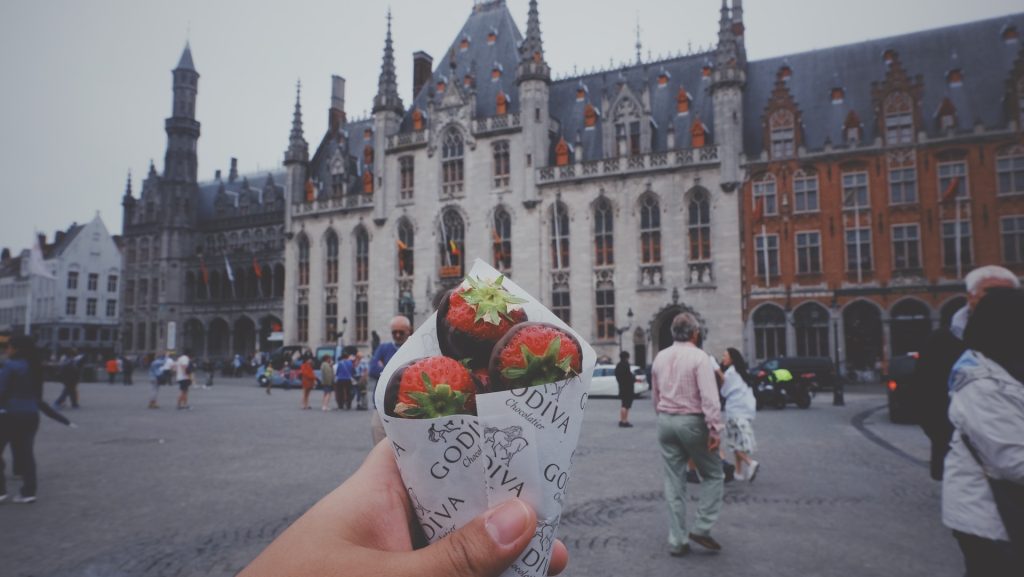
If you’re looking out for a place to stay on our Flanders 3-day travel guide then we got your covered!
Unfortunately, Flanders is far from a what can be considered a budget-friendly destination. Especially when it comes to food and accommodation, it is quite difficult (though not impossible) to find options that go easy on the wallet. This rings especially true in Bruges, the most popular city in the region.
That being said, here are a few hotel options which have passed our value-for-money test:
Flanders 3-day travel guide – Hotels in Bruges
Flanders 3-day travel guide – Hotels in Ghent
Flanders 3-day travel guide – Hotels in Antwerp
- € – prizeotel Antwerp-City
- €€ – Hampton By Hilton Antwerp Central Station
- €€€ – Van der Valk Hotel Antwerpen
Flanders 3-Day Travel Guide – Transportation between Brussels’ airports and Bruges

Whether you land in Charleroi or Zaventem, it is possible to get to Bruges in about just 2 hours. To do so, you can rely on the bus or on the national railways system.
For the former, and in case you land in Charleroi, Flibco runs the route every hour, operating between 07h00 and 00h30. You can buy your ticket online, with prices ranging from €19,90 and €24,40. Unfortunately, bus options are rather limited for those arriving through Zaventem, since Flixbus only has 1/2 daily departures (12h35 and 18h15) from the airport. However, ticket prices are lighter on the wallet, starting from €8,99 when bought online. As an alternative, you may head to the city center of Brussels, where you’ll be able to find plenty of bus connections to Bruges, or simply change the direction of your itinerary and start your Flanders’ itinerary in Antwerp, with the same Flixbus running many different bus connections between Zaventem and Antwerp, starting from €3,99.
On the other hand, if you choose the train, SNCB (National Railway Company of Belgium) has literally dozens of daily train departures between Brussels and Bruges. You can hop on the train in Charleroi (between 04h25 and 22h25), change vehicles in Brussels and arrive in Bruges in just a little over 2 hours, with tickets costing €23,80. However, keep in mind you’ll need to take the Bus TEC between Charleroi’s arrivals’ hall and the local train station, with the ticket for the short trip setting you back €6,00. As for Zaventem, not only will you find direct trains to Bruges, but the trip will also be shorter (1h30) and cheaper (also €23,80, but with the €6,40-airport supplement already included), with trains running from 05h30 to midnight. When you make it back into Zaventem from Antwerp for your flight back, the ticket will cost you €13,30 (supplement included).
Flanders 3-Day Travel Guide – Transportation between Bruges, Ghent and Antwerp

Considering that the cities of Bruges, Ghent and Antwerp have compact and perfectly walkable historic centers, the likelihood of you needing to use any local transport (be it bus or tram) is extremely low. Therefore, we will dedicate this section of our guide to intercity transportation, helping you figure out how to move around between these cities using the buses and the train!
However, and just so you can get the broader picture, all local tram and bus systems (Bruges has no trams) follow a similar fare system, with single tickets costing €2,50 and allowing passengers to make any transfers they need within 60 minutes.
Trains and buses between Bruges, Ghent and Antwerp

With a mere 110 km separating Bruges from Antwerp, and Ghent strategically positioned right between the two, traveling between all these tourist destinations couldn’t be any quicker or easier.
When it comes to options, there’s no beating the train, definitely the most comfortable and reliable alternative. Luckily, there are countless daily connections between Bruges, Ghent and Antwerp, so you can use the info below as a broad estimate:
- Bruges – Ghent: 25 minutes; €7,50
- Bruges – Antwerp: 1h30; €16,80
- Ghent – Antwerp: 1h00; €10,80
However, if you’re traveling as part of a group (even if it’s just 2 people), it might be worth considering the Standard Multi ticket, a shared pass allowing up to 10 trips for €93,00 (airport supplements – €6,40 per person per trip – not included). For this specific itinerary, the individual ticket price for all journeys (including Zaventem Airport-Bruges and Antwerp-Zaventem Airport supplements) for 2 people would be €110,80. Also, if you’re under 26, you can score some pretty sweet deals, both on individual/standard and Multi tickets, with the latter costing just €57,00 for 10 trips.
On the other hand, you want to save as much as possible, there’s no budget-friendlier option than the bus, though the rides are usually longer and considerably less comfortable. Regarding these intercity connections, you will once again be relying on good, old Flixbus! For the trip from Ghent to Antwerp, there are multiple daily departures, with tickets for this 1h10-journey starting from €3,99.
However, things are substantially different when it comes to trips between Bruges and Ghent, as there are only 2 or 3 daily connections, with buses often departing at odd times. Plus, if you don’t book beforehand, prices can actually be higher than the train (starting from €8,99). As an alternative for this stretch, you can even catch the De Lijn local bus nº 58, which actually happens to be the only local bus connection between two different cities in all of Belgium. The ticket is dirt-cheap – just €2,50 – and can be purchased online, at the stops’ automatic machines or simply by tapping your contactless payment card inside the vehicle. Since this is a local connection though, the only downside is that the bus will be stopping at every single little village along the way, stretching the trip to an unnecessarily long 2 hours. To check schedules and stops, you can use the company’s route planning tool.
Flanders 3-day Travel Guide – Free walking tours in Bruges, Ghent and Antwerp

While in Flanders, you have the option to explore any of these cities with a free walking tour. These tours, led by local guides or tour companies, offer guided visits to the historic centers, sharing intriguing stories about each place and providing valuable cultural context. Even though these tours are technically free, it’s customary to show appreciation for the guide’s efforts by leaving a tip at the end. In Flanders, a reasonable minimum tip would be around 8,00€.
That being said, here are a few companies that run free walking tours in Flanders.
Free Walking Tours in Bruges:
Free Walking Tours in Ghent:
Free Walking Tours in Antwerp:
Flanders 3-day Travel Guide – Hidden Treasures in Bruges, Ghent and Antwerp
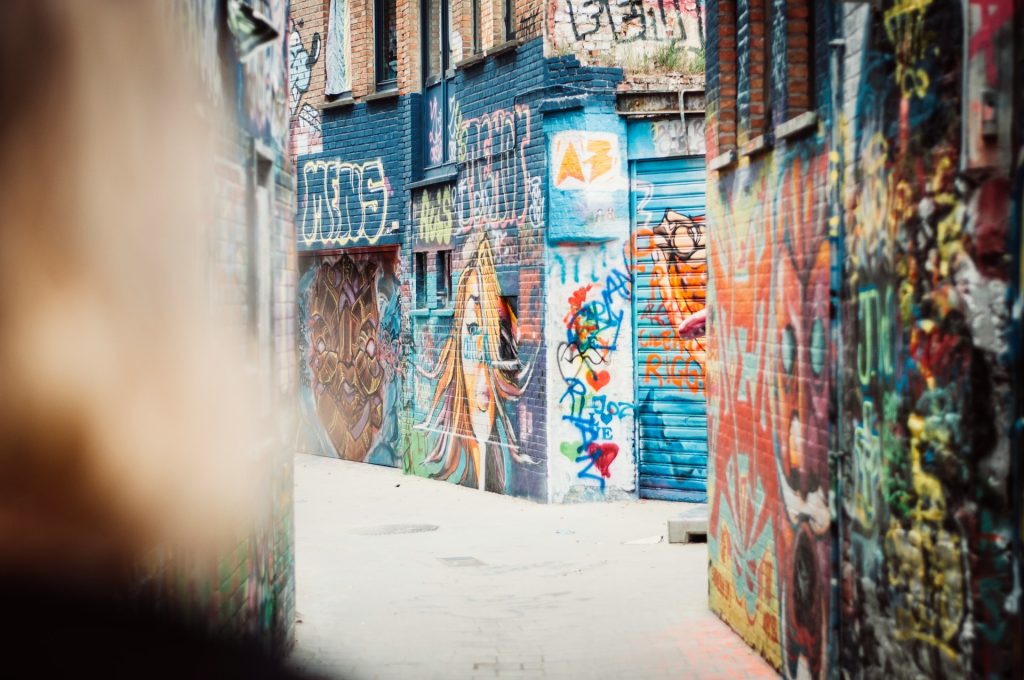
With only 3 days to explore the region of Flanders, you’ll need to split your time equally among all the three destinations you’ll be visiting. Although these cities are quite compact, there’s plenty in Bruges, Ghent and Antwerp to keep you busy!
As such, and because we believe a good traveler must always be able to explore beyond the obvious, here are a few more obscure places you should add to your list of things to see and do in Bruges, Ghent and Antwerp:
Windmills of Bruges: Scattered along the Kruisvest Park, where the city wall once stood by the canal, there are 4 ancient windmills in Bruges – another perfect example of the overlap between Flemish and Dutch cultures (along with the language and the love for bikes). Among these mills, don’t miss the Sint-Janshuismolen, which is open to visitors during Spring and Summer.
Jerusalem Church (Bruges): Although there is certainly no shortage of churches to visit in Bruges, this one hits different. After all, its patrons decided to build it following a visit to Jerusalem, with its architecture and style mimicking Christian places of worship in some Middle Eastern nations, such as Palestine, Syria or Lebanon.
Graffiti Street (Ghent): Tucked away in the heart of the historic center, this alley is a true open-air exhibition, its walls completely adorned with all kinds of street art. As a dynamic and constantly evolving work, the art displayed changes quite frequently.
Ruins of Sint-Baafsabdij (Ghent): First built in the 7th century to serve as an abbey, this structure was later partially destroyed and remodeled as a defensive fortress. As years went by, it was abandoned until it served neither of its original purposes, with nature gradually taking over the space. Nowadays, it is preserved as a historical monument, though very few visitors venture into its ruins.
Handelsbeurs (Antwerp): The world’s first purposely-built stock exchange, it’s hard to believe this magnificent building was left virtually abandoned for decades. Fortunately, it has since been renovated, recently reopening to the grand public in all its age-old splendor.
Da Ruien (Antwerp): Probably the quirkiest site you’ll visit in Flanders. Originally a maze of natural canals surrounding the hills where the city was first built, these spaces became a biological hazard after centuries of dumping waste and sewage into their waters. As a result, in the 16th century, city authorities had no choice but to ask locals to cover the canals and build new land on top of them, creating a series of underground tunnels in the old watercourses and ultimately creating the earliest form of sewage in the city. Now, it’s possible to walk along the old canals and even take boat trips through the submerged areas. If you don’t mind the smell, this can be a pretty unique experience.
Flanders 3-Day Travel Guide – What to See and Do in 72 Hours
With your time evenly split between Bruges, Ghent and Antwerp, you’ll have 24 hours to visit each of these cities. If the mission sounds a bit too ambitious, you’ll be pleased to find out that that their old towns are quite compact, allowing you to cross off a decent number of places and landmarks from your checklist in a relatively short period. After all, where’s the fun without a bit of a challenge?
Without further ado, here’s what to see and do in Bruges, Ghent and Antwerp in 3 days:
Flanders 3-Day Travel Guide – Day 1 – Bruges
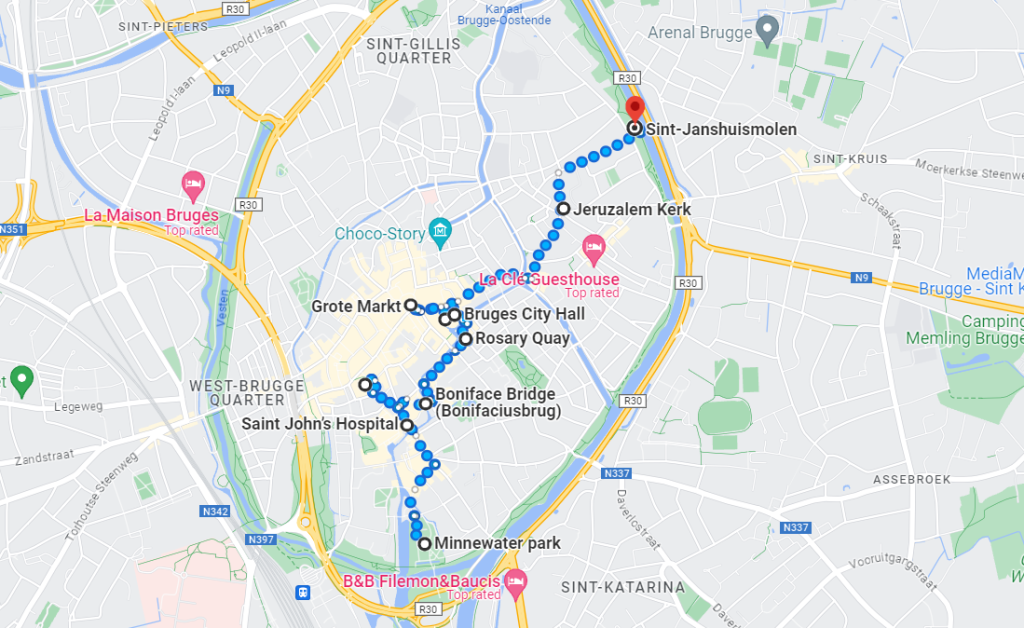
By far the most popular of all the Flemish cities, it makes perfect sense to kick off your visit in Bruges, also known as the “Venice of the North” due to its picture-perfect architecture and medieval canals. Assuming you’ll be staying near the train station, your journey begins at Minnewater Park, the city’s most famous green space, which embraces the quiant lake of the same name. For the best view of this oasis, it’s worth crossing Lovers’ Bridge before heading north towards the Old Town. In the heart of the historic center, your first stop will take place at St. John’s Hospital (€3,00), the oldest building in all of Bruges, famous for housing one of Europe’s first hospitals, originally founded in the 12th century. Nowadays, you can explore the old medical wings and the pharmacy, as well as a small museum with ancient medical instruments worthy of any modern horror movie set! Next up, pay a visit to the Cathedral of Saint Savior, the city’s largest and oldest place of worship, and to the Church of Our Lady, yet another majestic building, known for featuring in one of Bruges’ iconic postcard photos, usually taken from the photogenic Boniface Bridge, perhaps the most “Instagrammable” spot in the city.

And speaking of places that make great snaps, your next destination is precisely the Rozenhoedkaai, a lovely embankment where the Groenerei and Djiver canals meet, and arguably the only spot in the city that can rival the former when it comes to photo marketability. To no surprise, we must say, since it offers one of the most beautiful views of the entire city, making it a prime spot for the departure of boat tours through the canals of Bruges. Although there are several operators, prices and activities are pretty much the same across the board, with a 30-minute boat ride costing around €12,00 (with much less frequent departures in Winter months). Back on solid ground, walking through Burg Square is an absolute must, since this is where you’ll find the monumental Town Hall (€8,00) with its fabulous Gothic architecture, as well as the Basilica of the Holy Blood, a church known for housing a small vial that (allegedly) contains the blood of Jesus Christ. While admission is free, if you want to see the relic up close (every afternoon from 14h00 to 16h00), you’ll need to make a small donation, with no minimum amount required. For the literal highlight (focus on “high”) of your visit to Bruges, don’t miss the Grote Markt, regarded as the main and most beautiful square in the city. In addition to the expansive square and adorable rows of typical colorful houses, this is where you’ll find the Belfry Tower (€15,00), an impressive 86-meter structure you can climb for the best views over the city.
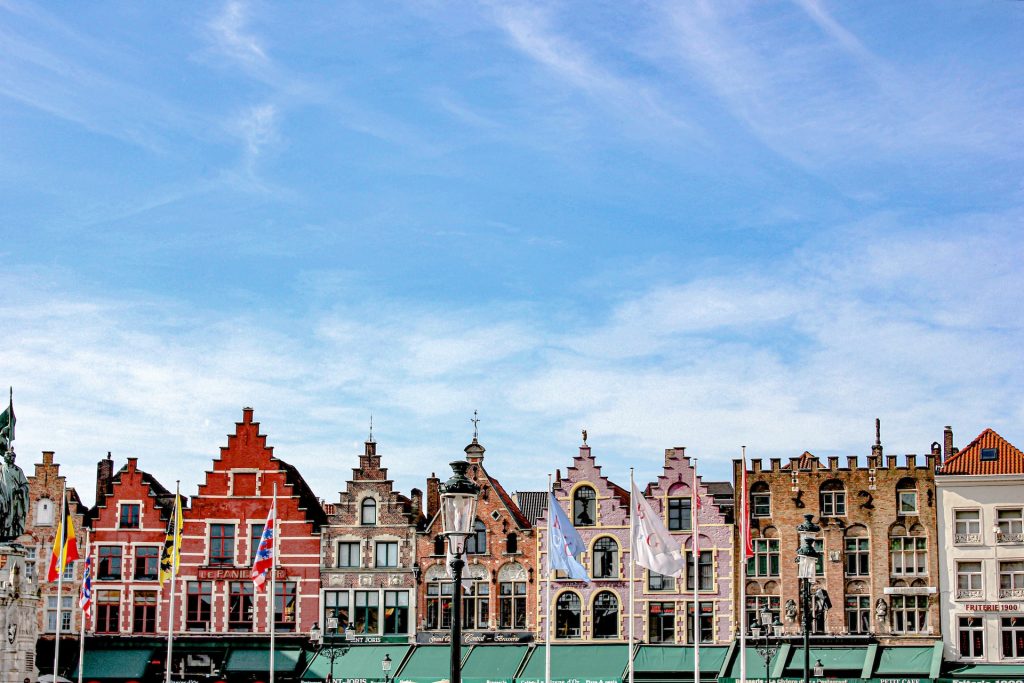
As the day draws to a close, you’ll again move away from the heart of the city towards the banks of the Ghent-Bruges Canal, stopping at the Church of Jerusalem on the way. Although there is certainly no shortage of churches to visit in Bruges, this one hits different. After all, its patrons decided to build it following a visit to Jerusalem, with its architecture and style mimicking Christian places of worship in some Middle Eastern nations, such as Palestine, Syria or Lebanon. To end on a high note, take a stroll along Kruisvest Park, where the city wall once stood by the canal, and check out 4 of Bruges’ ancient windmills – another perfect example of the overlap between Flemish and Dutch cultures (along with the language and the love for bikes). Among these mills, don’t miss the Sint-Janshuismolen, which is open to visitors during Spring and Summer.

First day wrap-up:
- Minnewater Park
- Lovers’ Bridge
- John’s Hospital
- Cathedral of Saint Savior
- Church of Our Lady
- Boniface Bridge
- Rozenhoedkaai
- Boat Trip
- Burg Square
- Town Hall (Stadhuis)
- Basilica of the Holy Blood
- Grote Markt
- Belfry of Bruges
- Jerusalem Church
- Windmills of Bruges
Where to eat in Flanders – Cheap restaurants in Bruges:
- ‘t Bagientje (Belgian traditional)
- Ganzespel (Belgian traditional)
- De Halve Maan (beerhouse – Belgian traditional)
- House of Waffles (waffles – Belgian specialty)
- Frituur De Gentpoorte (frites –Belgian specialty)
- The Beerwall (Belgian beer)
- The Olive Street Food (Greek)
- Taboulé (Lebanese)
- Bocca (pasta)
- Marco Polo Noodlebar (noodles)
Flanders 3-Day Travel Guide – Day 2 – Ghent

Time to hit the rail tracks again – this time to visit Ghent, perhaps the only Flemish city able to rival Bruges when it comes to beauty and tourist allure! However, before you delve deep into its maze of narrow façades, picturesque bridges and quaint canals, you’ll kick things off with a visit to the Ruins of Sint-Baafsabdij, one of Ghent’s hidden gems. First built in the 7th century to serve as an abbey, this structure was later partially destroyed and remodeled as a defensive fortress. As years went by, it was abandoned until it served neither of its original purposes, with nature gradually taking over the space. Nowadays, it is preserved as a historical monument, though very few visitors venture into its ruins. After this uncommon site, you will then explore the historic center of Ghent and discover its many charms, starting with a visit to Saint Bavo’s Cathedral, the largest of all the city’s churches, followed by a climb up the Belfry Tower (€11,00), offering one of the most iconic views of the downtown area. True to the style and essence of classic northern European cities, Ghent’s nearby Town Hall (Stadhuis) was built with all the grandeur and finesse usually saved for major religious buildings at the time, making it very much worthy of a visit. For something completely different, we also recommend taking a break at Graffiti Street, an alley that serves as an open-air exhibition, its walls completely adorned with all kinds of street art. As a dynamic and constantly evolving work, the art displayed changes quite frequently.

Before heading down to the riverside, make sure to visit Korenmarkt, one of the main squares in the city, and the place where you can appreciate the old guild houses and visit Saint Nicholas Church. Once you make it to the banks of River Lys, it’s mandatory to take a walk on both sides, starting with the Graslei embankment, where you can appreciate some of the most beautiful and ornate buildings in the city from up close. After strolling for a few minutes, you will then reach the famous Gravensteen Castle (€13,00), a fortress built over 800 years ago and one of the best-preserved walled castles in all of Flanders. From there, make your way back to the banks of the Lys, but this time to walk along the Korenlei, where you can enjoy a completely different perspective of the Graslei and the way its distinctive post office tower peeks from behind the magnificent rows of guild houses. Quite possibly, Ghent’s most popular postcard-picture. To cap off your day in Ghent, take some time to walk along Saint Michael’s Bridge, a crossing that offers a fabulous panoramic view of almost all the places you’ve just visited, with the scenic quays of Graslei and Korenlei to the south, the towers of Saint Nicholas Church and the Belfry to the west, and the beautiful Saint Michael’s Church to the east. Couldn’t ask for a better farewell gift!

Second day wrap-up:
- Ruins of Sint-Baafsabdij
- Saint Bavo’s Cathedral
- Belfry of Ghent
- Town Hall (Stadhuis)
- Graffiti Street
- Korenmarkt
- Saint Nicholas Church
- Graslei
- Gravensteen Castle
- Korenlei
- St Michael’s Bridge
- Saint Michael’s Church
Where to eat in Flanders – Cheap restaurants in Ghent:
- Ooost (Belgian traditional)
- Oyya (waffles – Belgian specialty)
- Frituur Bij Filip (frites – Belgian specialty)
- Waterhuis aan de Bierkant (Belgian beer)
- Aywa (Lebanese)
- Horn OK Please (Indian)
- Ozgem (Turkish)
- A Lisboeta (Portuguese tapas/”petiscos”)
- Eatramen (Ramen and Noodle Bar)
- Soepbar Sordo (soups and light meals)
Flanders 3-Day Travel Guide – Day 3 – Antwerp

Considered the largest and main city in Flanders, Antwerp may lack the classical beauty of its neighbors but it definitely boasts the liveliest atmosphere in the region, as well as the best collection of museums in Belgium. With an absurd array of institutions to see and explore, we’ll try to recommend different types of museums, ensuring you don’t just gaze at boring paintings all day long. That being said, your itinerary will start at the Red Star Line (€10,00), a museum of immigration that narrates the history (and the stories) of the countless Belgian and European immigrants who left for a better life in North America, setting sail precisely from this location. From there, you’ll start walking towards the Old Town, making quick detours to visit St. Paul’s Church and the Het Steen, a small castle built on the banks of the Scheldt River. Upon arriving in the historic center, check out the underground world of Da Ruien, probably the quirkiest site you’ll visit in Flanders. Originally a maze of natural canals surrounding the hills where the city was first built, these spaces became a biological hazard after centuries of dumping waste and sewage into their waters. As a result, in the 16th century, city authorities had no choice but to ask locals to cover the canals and build new land on top of them, creating a series of underground tunnels in the old watercourses and ultimately creating the earliest form of sewage in the city. Now, it’s possible to walk along the old canals and even take boat trips through the submerged areas. If you don’t mind the smell, this can be a pretty unique experience.

Back on surface level, it’s time to gasp at the sight of the Grote Markt, the city’s main square and one of the few places in Antwerp that can actually rival the ancient opulence of Ghent and Bruges. Notable features include the Town Hall building and the Brabo Fountain, as well as the imposing Cathedral of Our Lady, the city’s main church (and the tallest in the country), located immediately behind the magnificent square. Next up, we recommend a visit to the Plantin-Moretus Museum (€12,00), one of the world’s earliest printing companies. Besides seeing the equipment and techniques that allowed for some of mankind’s earliest mass-produced prints, the museum is housed inside a typical Flemish manor house, allowing you to see one of these magnificent buildings from the inside. Add in the exhibition of an original Guttenberg Bible, the first ever printed book, and you may start to understand why this place is a UNESCO-designated World Heritage Site. As an alternative, and should you appreciate more traditional forms of art, you may consider visiting Rubenshuis (€8,00) instead, another Flemish mansion where the painter Peter Paul Rubens lived, showcasing some of the major works of one of the region’s greatest artistic talents.

To break up the museum visits, enjoy a pleasant stroll along Meir Street – Antwerp’s main commercial thoroughfare – where you’ll find the Stadsfeestzaal, one of the world’s most beautiful shopping galleries, before taking a brief detour to Handelsbeurs. Considered the world’s first purposely-built stock exchange, it’s hard to believe this magnificent building was left virtually abandoned for decades. Fortunately, it has since been renovated, recently reopening to the grand public in all its age-old splendor. As you bid farewell to your adventure through Flemish lands, and though it may seem like another inconspicuous activity, don’t miss out on the extraordinary Antwerp Central Railway Station, unquestionably one of the most impressive you’ll ever see, with all the grandeur and opulence you’d expect from a palace or major church. No wonder it’s dubbed the “Railway Cathedral”! Finally, if you still have some time to spare before getting back to the airport, consider a visit to Chocolate Nation (€19,90), an interactive museum about a product that is beloved by all nations, but that very few managed to master quite like the Belgians. It’s the perfect cherry on top for those traveling with kids… though we wish you good luck putting up with their sugar rush on the way back home!

Third day wrap-up:
- Red Star Line
- Paul’s Church
- Het Steen
- Da Ruien
- Grote Markt
- Town Hall (Stadhuis)
- Brabo Fountain
- Cathedral of Our Lady
- Plantin-Moretus Museum OR Rubenshuis
- Meir Street
- Stadsfeestzaal
- Handelsbeurs
- Antwerp Central Railway Station
- Chocolate Nation
Where to eat in Flanders – Cheap restaurants in Antwerp:
- Fish A’Gogo (mussels and fried fish – Belgian traditional)
- Paters Vaetje (beerhouse – Belgian traditional)
- Frites Atelier (frites – Belgian specialty)
- Amadeus Antwerpen (ribs, all-you-can-eat)
- Falafel Tof (falafel – Middle Eastern)
- Dilbi (Syrian – Middle Eastern)
- Takumi (Japanese)
- Ni Shifu (Chinese – Sichuan)
- Satai (Southeast Asian)
- Cypro (Turkish-Cypriot)
Got more than 3 days in Flanders? Then you might want to check out other destinations worth visiting in the region:

- Brussels: Although the city has its very own administrative entity, Brussels is still a part of Flanders, geographically and historically. Besides, exploring the country’s capital has to be a no-brainer for those with at least an extra day – if only to see the Grand-Place, one of the most beautiful squares in the world!
- Leuven: Probably the most popular Flemish destination outside of our fantastic trio, Leuven offers more of the classic architecture the region is so famed for, albeit with less crowds and a more youthful and festive vibe, considering the city is home to the oldest university in Belgium!
- Mechelen: Located halfway between Antwerp and Brussels, Mechelen makes up in charm what it clearly lacks in size. With its expansive open square dominated by a monumental tower and a traditional riverbank area, it gives off serious small Dutch city-vibes, resembling the likes Leiden or Delft.
- Ypres: The perfect destination for history buffs and World War I enthusiasts, Ypres, near the French border, witnessed some of the worst battles of the conflict. Nowadays, in addition to the extraordinary Cloth Hall (the city’s most iconic building), you can visit the battlefields and trenches where one of the darkest chapters in modern history took place.
- Dinant: Don’t mind if we cheat a little bit before wrapping up. After all, Dinant isn’t a part of Flanders, belonging to the neighboring Wallonia (the French-speaking region of Belgium). However, just have a look at a few photos of this place on Google and you’ll instantly understand why we couldn’t leave it out. Arguably the best destination in Wallonia.
Traveling soon? Get your Holafly eSIM with a 5% discount for unlimited internet access in any destination. No more worrying about roaming charges or finding local SIM cards. Enjoy unlimited data and stay connected with ease. Order your Holafly eSIM now »
Heymondo offers a wide range of travel assistance insurance policies. They combine the best quality, service and price with various levels of coverage, so you’re covered on your weekend getaways and long trips. Click here to get 5% off on your travel insurance »





